Despite a turbulent history during which it has been occupied and conquered by a succession of its neighbours and European colonial powers, Dubrovnik is now a town at peace, allowing visitors to make the most of its historical architecture, white pebble beaches and crystal-clear sea.
Political upheaval has seldom kept tourists away from this uniquely lovely Adriatic port city; for centuries it has drawn those seeking fine accommodations, excellent cuisine, beautiful surroundings and recreational opportunities. George Bernard Shaw is quoted as describing Dubrovnik as 'heaven on earth'.
The old town, dating from the 7th century, is on UNESCO's list of World Heritage Sites. Enclosed by city walls built in the 13th century, the buildings represent a cross-section of medieval architectural styles and remain well preserved. Onofrio's Fountain, situated just inside the main entrance to the old city at Pile Gate, is one of Dubrovnik's most famous landmarks and a popular meeting place. The centre of the old town is the Stradun, its main street, which was originally a channel separating an island from the mainland, and was filled in to join two opposite towns into the merged city of Dubrovnik. There are numerous churches, monasteries and museums to explore; the old town also boasts plenty of restaurants, bars and shops; and the coastal belt is awash with marinas, coves and promenades. Most of the hotels and the best beaches are located north west of the old town at Lapad, as well as in Ploce to the north east.
Attractions
| The 14th century Franciscan church and monastery enclosed in the walls of medieval Dubrovnik boasts one of the most beautiful Romanesque cloisters in Dalmatia. Within the monastery complex is a working pharmacy, which has been in business since 1317. A museum houses relics from the original medieval pharmacy such as medical books, instruments and weight scales, as well as some ancient manuscripts and gilded church relics. |
| 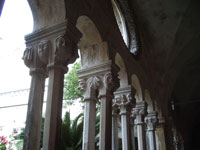 |
| In close proximity to the city of Dubrovnik are numerous picturesque villages and resorts to visit and explore. About 11 miles (18km) away on the road to Split is the quiet bay of Zaton, with its sandy beaches and pine forest. The town has numerous restaurants, a relic of the days when it was the chosen retreat for the aristocrats of the Dubrovnik Republic. The village of Tristeno features the 'Arboretum', a Gothic-Renaissance park on the coast. In the centre of this village visitors are awed by two gigantic sycamore trees, reputedly 500 years old, standing 197ft (60m) high. Even closer to the city the towns of Kupari, Srebreno, Mlini, Soline and Plat lie along a chain of hills descending to the rim of Zupa Bay, known as one of the most beautiful resorts on the Dubrovnik Riviera, with modern hotels offering a variety of watersports. | | 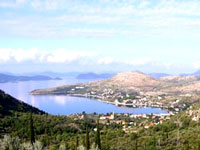 |
The impressive walls enclosing the ancient city of Dubrovnik were laid out in the 13th century and became an ongoing work for almost two centuries. They are among the finest in the world and are the city's main attraction. The fortified walls are up to 10ft (3m) thick on the sea side, and at least twice as thick on the land side to guard against invasion by the Turks in the 15th century, and reach 82ft (25m) in height. Visitors can access the walls via a steep stone stairway where they will be rewarded with superb views over the old city and out to sea. A walk around the old city from this fascinating vantage point is a must for visitors to Dubrovnik. The detached Lovrjenac Fort to the west of the old city stood guard against both land and sea invasion and is also worth a visit for its superb views.
| | 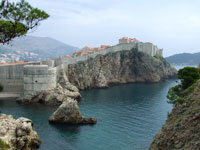 |
Located in the historical centre of Dubrovnik, the exhibition space features temporary, changing exhibitions of photographic works relating to war and conflict. The photographs aim to showcase war as it really is, the horror and brutality that is experienced by innocents and combatants alike. War Photo Limited exhibitions are intended to be educational and showcase the work of world-renowned photojournalists.
| | 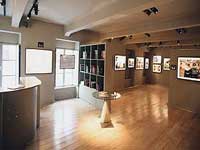 |
Croatia's literary genius, Marin Drzic, has been immortalised by turning his Dubrovnik home into a museum which introduces visitors to the writer with a 40-minute presentation on his life and work. The presentation is also a good introduction for visitors to the history and culture of Dubrovnik itself.
| | 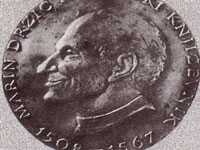 |
Dubrovnik has had three cathedrals on the same site during its long history. The first was a Byzantine building dating from the 7th century; the second a Romanesque Cathedral which was destroyed by the great earthquake of the 17th century; and at present the beautiful Baroque structure which was designed by Italian architect Buffalini from Urbino and completed in 1713. The treasury of the cathedral is rich in religious relics, icons, paintings and other items of value. It is also possible to view the archaeological excavations that continue on the cathedral site.
| | 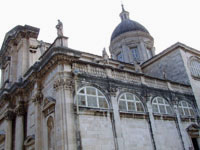 |
| A popular day trip from Dubrovnik is to the offshore islands of Kolocep, Lopud and Sipan, which are part of a larger archipelago northwest of Dubrovnik; they are the only inhabited islands in the group and the most popular for visitors. The islands are an escape from the mainland crowds and boast olive groves and orchards, sand and pebble beaches, 15th-century summer residences and several interesting churches and monasteries. Kolocep is the smallest and closest island to Dubrovnik, covered in green vegetation; Lopud is the most visited and is famed for its stretch of sandy beach at Sunj; while Sipan was the summer getaway for aristocratic families in Dubrovnik and is more interesting from an historical point of view. | | 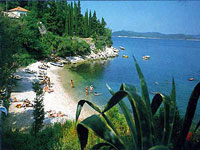 |
| Located in a small square near the Pila Gate and Franciscan Monastery, this large fountain was built in 1438 by the famous Italian architect from Naples, Onofrio della Cava. After sustaining severe damage in a 1667 earthquake, the fountain was repaired and features 16 masked faces, known as 'maskeroni', which supplied water via an aqueduct. This construction was a masterpiece of that time. A smaller Onofrio's fountain located on the opposite side of the Stradun supplied water to the marketplace on Lu~a Square. | | 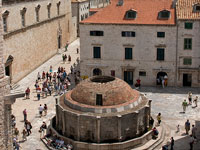 |
| Built between 1516 and 1521, the Sponza Palace was the center of medieval Dubrovnik, complete with a mint, a weights and measures office and a Custom-House, a place where the goods brought by merchants from all over the world would be conveyed and custom fees collected. Sponza is one of the most beautiful palaces in the City and has managed to preserve its original form. | | 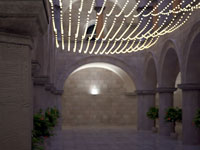 |
| Lined with palm trees, Dubrovnik's port is a major focal point of the city featuring breathtaking and unforgettable scenery. Located right next to the picturesque UNESCO World Heritage Site of the Old Town, the port features great shopping at small markets along its tiny cobble stoned streets and fantastic sightseeing activities. What better setting could there possibly be for a port - it's no wonder Dubrovnik is known as the 'Jewel of the Adriatic'. | | 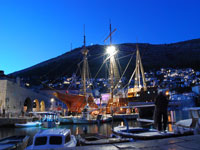 |
| The biggest, longest and widest street in Dubrovnik, the Stradun dates back to the 13th century. The street is 958 feet (292 metres) long and is the commercial, entertainment and spiritual centre of Dubrovnik. The shiny, slippery, marble-paved Stradun is the main walkway of Dubrovnik's Stari Grad. | | 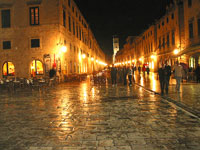 |
Activities
Dubrovnik is currently a red-hot cruise destination, included in every eastern Mediterranean cruise itinerary. It's not hard to see why: known as the 'jewel of the Adriatic', historic Dubrovnik is a strikingly attractive city set like a shimmering diamond in the crown of its magnificent 13th century harbour. Dubrovnik cruise passengers can access the pedestrianised Old Town right from the port. This UNESCO World Heritage Site features a renowned Franciscan Monastery with a working pharmacy dating from 1317, as well as plenty of lively, modern sights and sounds that draw a substantial influx of tourists and cruise passengers throughout the year. The best of the invariably excellent beaches is probably Banja with its crystal clear waters and white sand. For a bit more seclusion (and the prospect of nudist sunbathing) get a ferry from the port to Lokrum Island. Don't miss Dubrovnik's annual Summer Festival over July and August when live music by international stars brings the peak tourist season to life. The harbour is the centrepiece of the town but only yachts and small boats can dock there. Cruise ships will either berth at Gruz Harbour, 20 minutes from the Old Town, or anchor in the deep waters offshore affording passengers lingering views of Dubrovnik's romantic facade. Cruises from Dubrovnik will take in other Croatian highlights such as Split, which is built up around Roman Emperor Diocletian's Palace; Zadar, with its numerous historical sites; and Korcula, birthplace of Marco Polo. On-course to these attractions passengers will enjoy views of the thousands of pristine islands that make up the Croatian Archipelago. Should you wish to cruise from Dubrovnik, a good alternative to big cruise liners are the traditional Gulet cruises. These wooden vessels carry from 20 to 40 passengers and offer sleep-on packages of up to seven days. The small size of the Gulet allows it to access coves and harbours in the Adriatic that larger vessels are denied. | 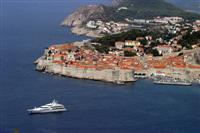 |
Events
| Dubrovnik Summer Festival |
Dubrovnik - Various
Few would question Dubrovnik's claim as one of the most stunning cities on the planet, and during the summer months festivities take hold of this charming destination with a number of music, theatre, fringe and fireworks performances. Visit the website for more details.
| | 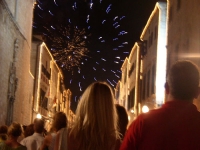 |
| Julian Rachlin & Friends Chamber Music Festival |
Dubrovnik - Rector's Palace
During the months of August and September, a series of six chamber concerts are held at Dubrovnik's Rector's Palace. Violinist Julian Rachlin hosts the event and is joined by musical greats as cellist Mischa Maisky, violinist Janine Jansen, and pianist Itamar Golan to name a few. The works of Tchaikovsky, Beethoven, Shumann, Bach and Shostakovich are performed to an almost-always sold out audience - a must for all lovers of classical music.
| | 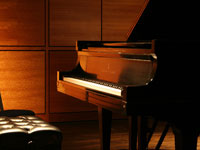 |
Dubrovnik - Various
Dating back to the 14th century, the Dubrovnik Carnival still upholds many of the same traditions where people parade down the streets of Dubrovnik dressed in gaudy costumes while the sounds of drums and trumpets fill the air and events such as jousting competitions take place. | | 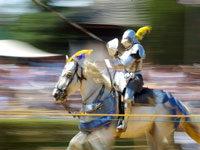 |















No comments:
Post a Comment